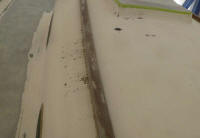
110 Cookson Lane | Whitefield, ME 04353 | 207-232-7600 | tim@lackeysailing.com
I got started by sanding the various areas on deck that I'd filled yesterday, preparing them for another round of fairing filler later in the day.
After cleaning up, I turned to a task that I'd hoped--and tried--to avoid, but in the end I could see no choice. During hardware removal, I'd looked at the wooden handrails on the cabin top, but at the time elected to try and leave them in place because the fasteners securing them--screws driven up from inside the cabin--were covered with filler that I would have preferred not to disturb. Again at the time, the rails had seemed to be well secured and sealed. There was also an existing break on the port rail, which had been held together with a couple through bolts from inside, and I worried that removal could cause damage to the rails and might not be worth the risk--at least with the information I had at the time.
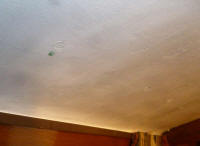
During various stages of paint removal and surface preparations, however, it became abundantly clear that the rails were poorly sealed (if at all); deck vibrations caused dried debris and other detritus to come out from beneath the rails, and sweeping the decks would push dust right beneath the rails. Portions of the rails were clearly loose and not tightly installed (for reasons that would become clear later). Clearly there was a gap in most areas, and I didn't like the idea of that. There really seemed no course but to remove them.
To remove the rails, I went below and slowly removed the fasteners, after digging out the filler covering their heads. The outline of most of the heads was visible through the filler and paint, but I soon discovered that there was no rhyme or reason to the fasteners' spacing or location, which made it a challenging job. Many of the fasteners simply spun in place and didn't back out--obviously one reason the rails seemed loose.
With time and caution, and eventually after cutting through a few recalcitrant fasteners with a saw from outside, I managed to remove both rails intact (other than the existing break in the port rail). It looked like, over the years, additional fasteners had been driven in here and there as some of the originals lost their grip, so in some places there was a fastener every three inches or so, while in others the spacing was more like 12".
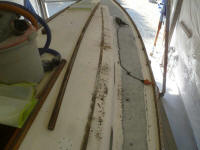
Afterwards, I sanded the areas that had been hidden beneath the rails, then reamed out the old fastener holes from inside and out so I could fill them. To reinstall the rails later, I'd choose a different installation method and different fastener spacing.
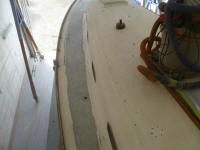
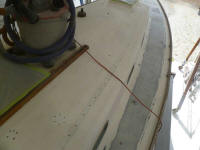
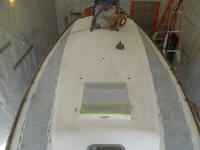
After cleaning up, I applied fairing filler to the various deck areas as needed, including the handrail areas and the fiberglass patches on the poop deck. I also installed fiberglass to the patches on the underside of the deck, completing those repairs.
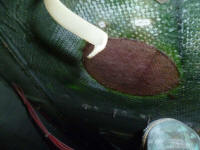
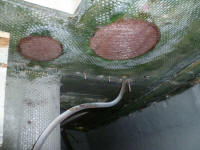
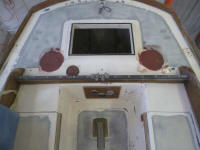
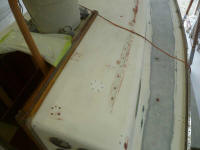
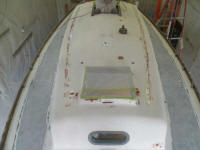
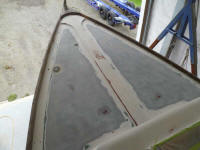

Next, I turned to the toerails, and, with a heat gun and scraper, removed the old finish from the wood on both sides of the boat. The wood was in fair condition in most areas, with a few patched-in sections that had been installed over the years for one reason or another. Plenty of sanding would clean up the wood with some success, though the general condition was such that the wood would never look new or perfect again. At the port bow, there was a splintered area where a chock had been pulled out during a storm, and I'd be cutting this area away and replacing it with new wood in due course.
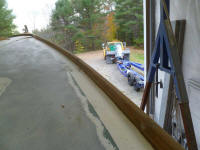
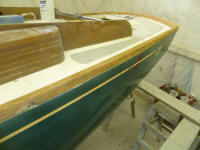
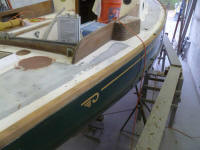
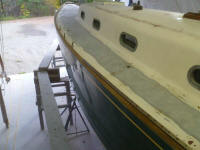
Total Time on This Job Today: 6.75 hours
